
I've talked about Saigo Takamori many times before. He was born in Satsuma (the name of Kagoshima before the 1900's) and grew up in what is now Kagoshima City. He eventually ended up leading part of the rebellion against the shogun and his government in the 1860's to reinstate the Emperor as the true political and military leader of Japan. He died during a battle against the new government's forces, when there was a falling out between him and his childhood friend, Toshimichi Okubo. To prevent the government from claiming a pure victory, Saigo's second cut off Saigo's head and buried it somewhere, so that it's never been found. In short, Saigo is a local legend, and "native son." He's also a very easy marketing gimmick, and has been used for selling a lot of stuff, including shochu.
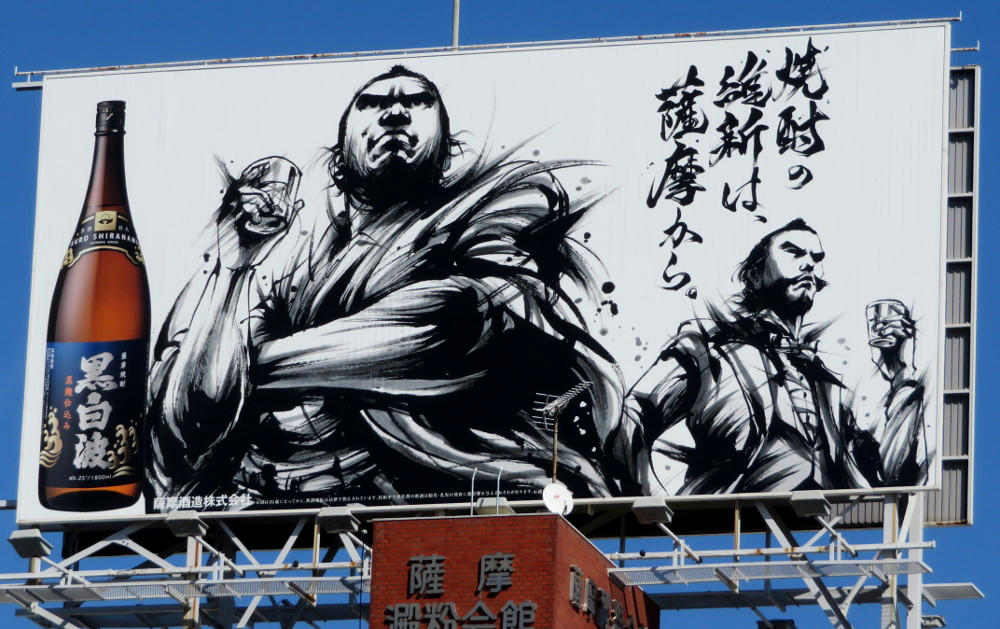
What started me to write this blog entry, is when I saw the above billboard for shochu, showing Saigo and Toshimichi as ultra-macho drinkers. It's kind of the opposite of what most artistic directors shoot for. That got me thinking about compiling a bunch of photos of Saigo, Toshimichi, and a few other local figures that get used occasionally.
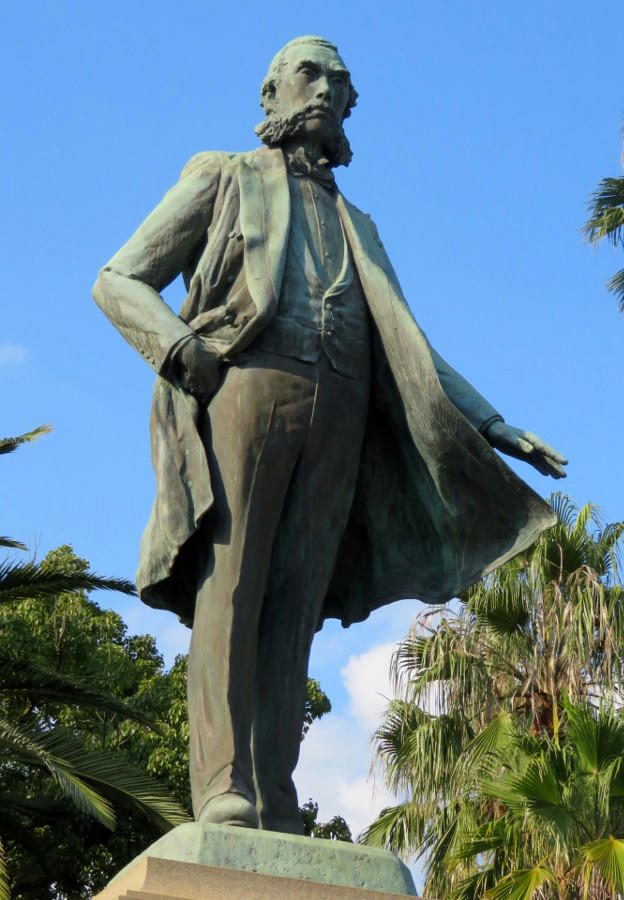
Toshimichi Okubo turned into a master statesman and politician when the new government was formed. Unfortunately, once the shogun was defeated and the Emperor returned to power, Saigo recommended that Japan immediately invade Korea to expand their power base. Toshimichi was against the idea. Saigo returned to Satsuma, with the intention of living quietly in the countryside. However, his students talked him into leading them against the new government, with Saigo essentially fighting against Toshimichi, and Saigo's eventual death.
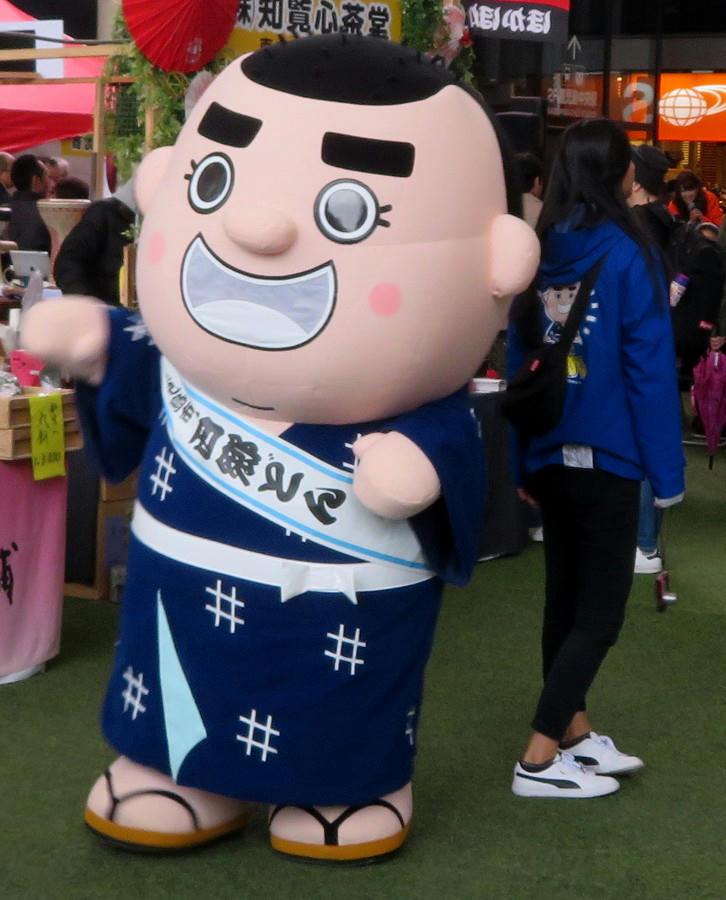
(Common portrayal of Saigo, as a foamhead.)
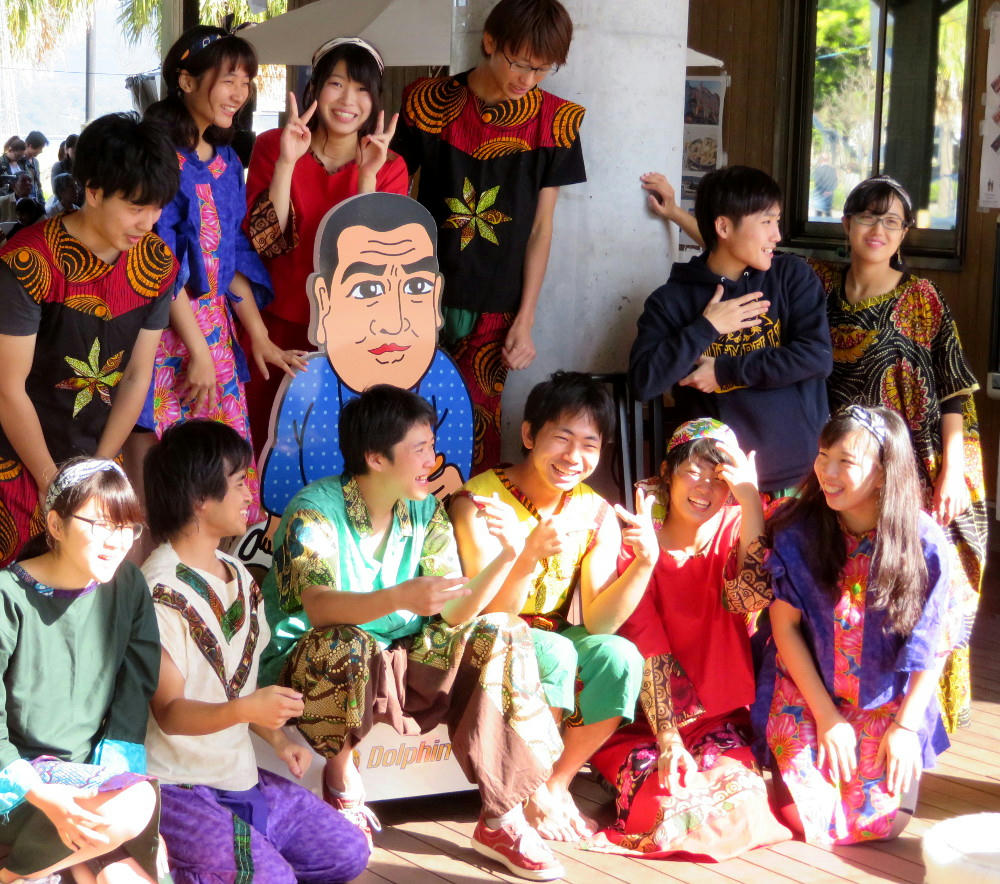
(Foreign university students posing with a cut-out of Saigo at Dolphin Port.)
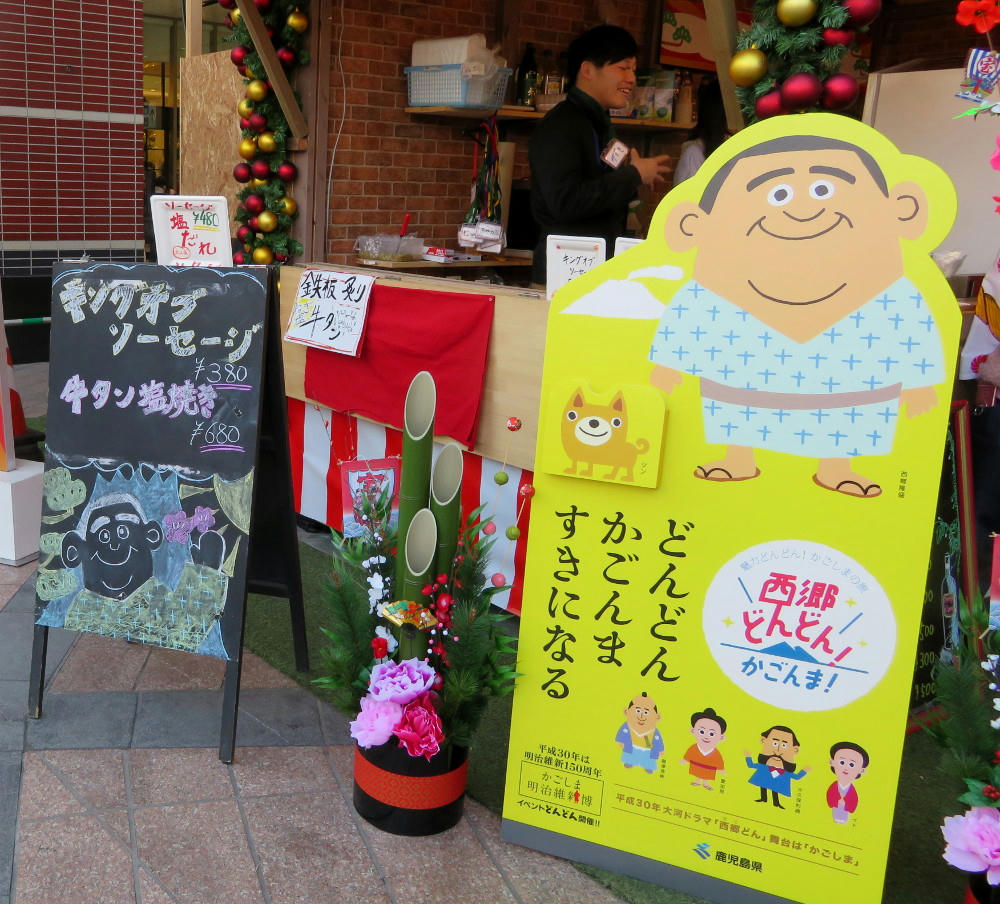
(Ad with Saigo and a revised version of his pet dog.)
According to a story that ran in the Japan Times, Saigo's favorite dog had big, floppy ears, and may have been a western breed. After Saigo's death, the artist that made the most famous bronze statue of him, made a statue of the dog as well, with floppy ears. There was a big backlash, with critics complaining that the dog looked Chinese. The artist redid the dog's statue, giving it smaller, more pointed ears, and that's what everyone in Japan associates with Saigo's dog now.
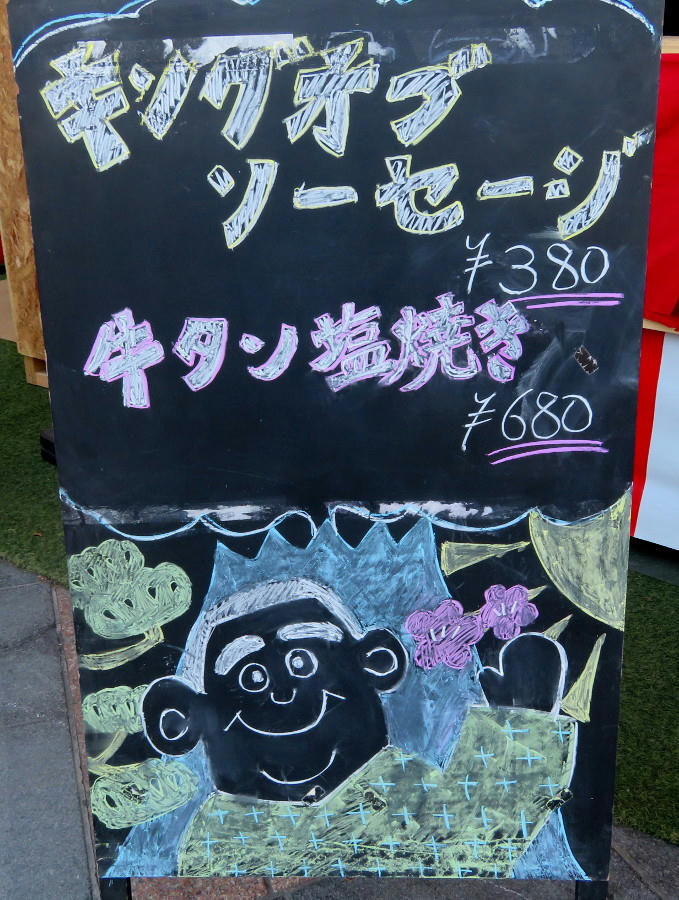
(Close-up of the chalk artwork, with prices for a food table selling sausages and beef tongue.)
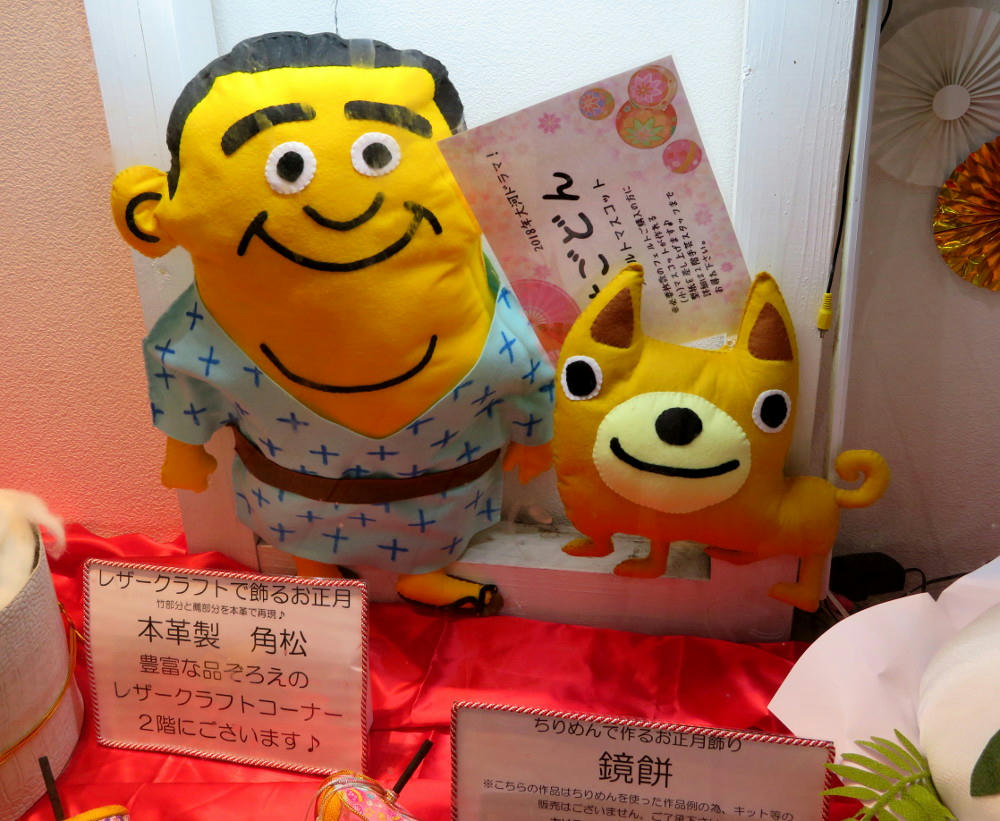
(A pillow version of Saigo and his dog, available for sale at Makino fabrics and crafts.)
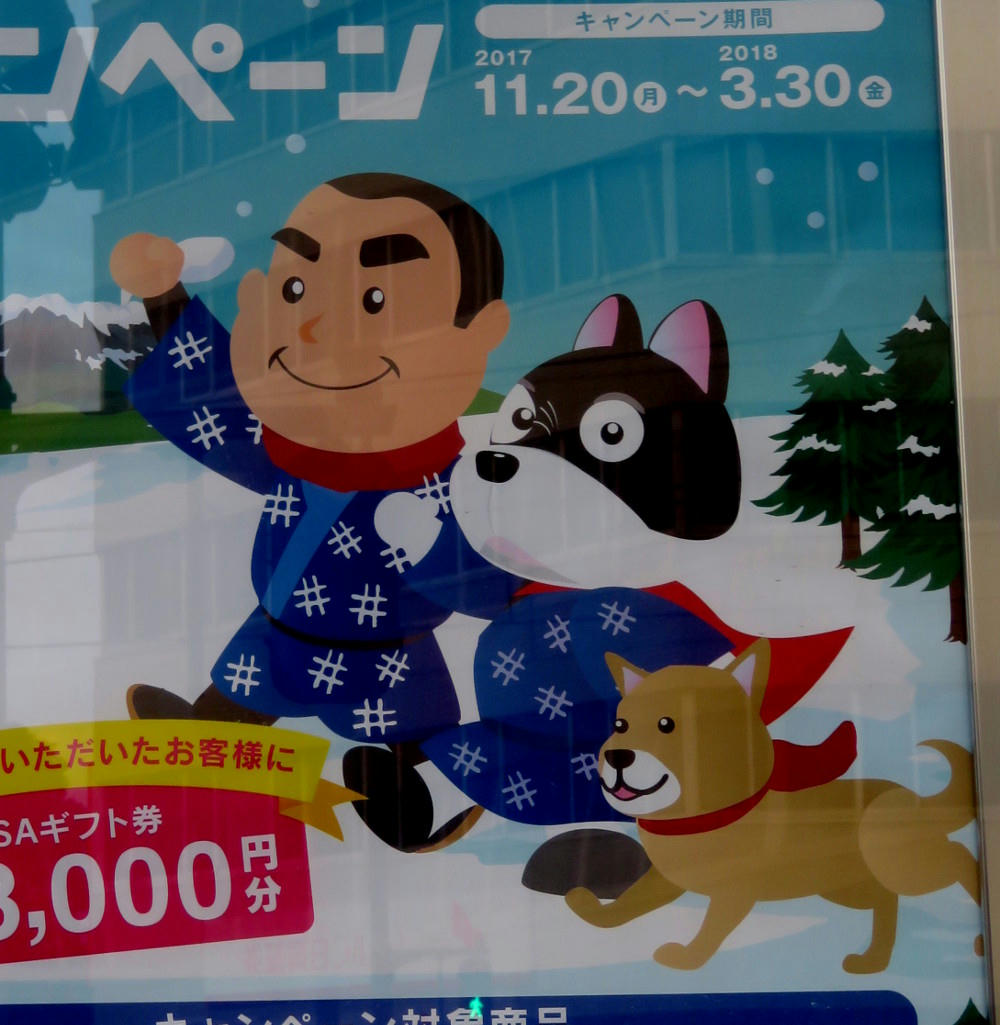
(Bank poster advertising savings accounts. The black dog is the bank's mascot character.)
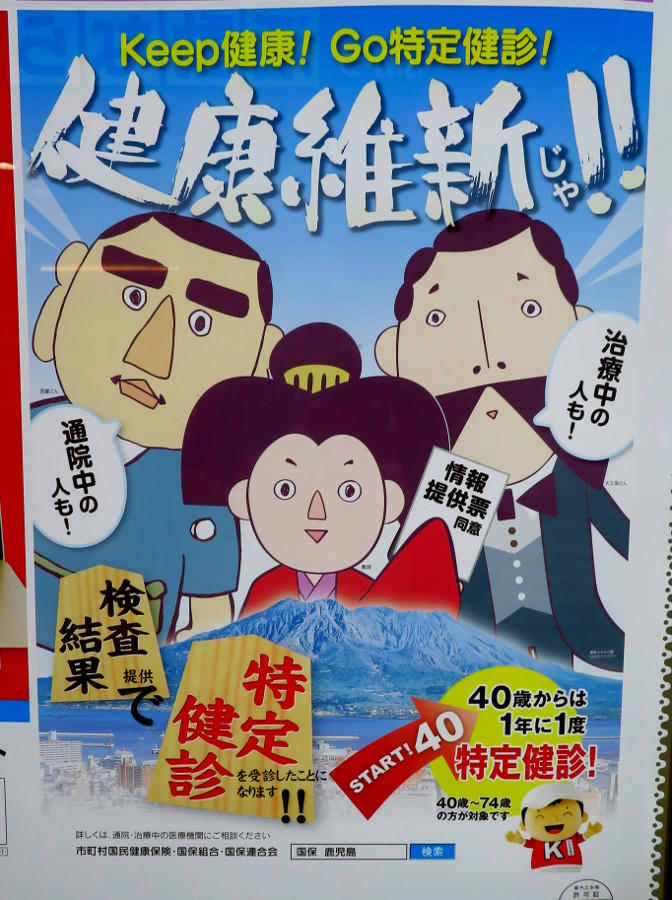
(I think this was an ad for health insurance, or something. Features Atsuhime and Toshimichi.)
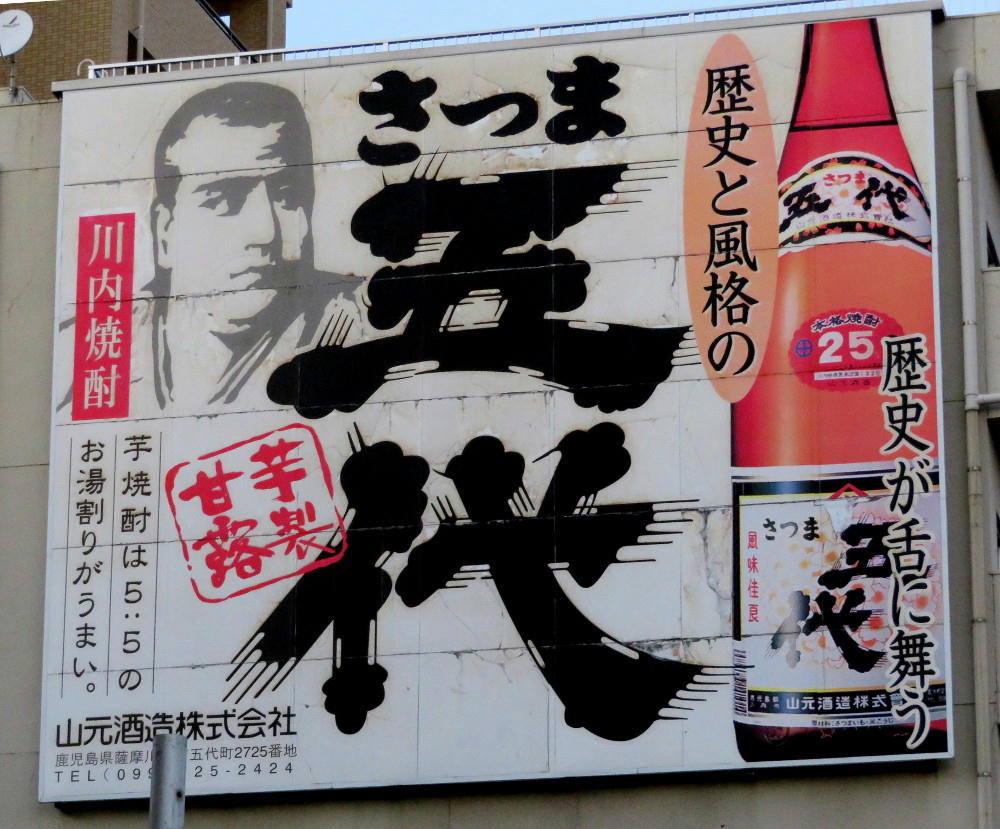
(More shochu.)
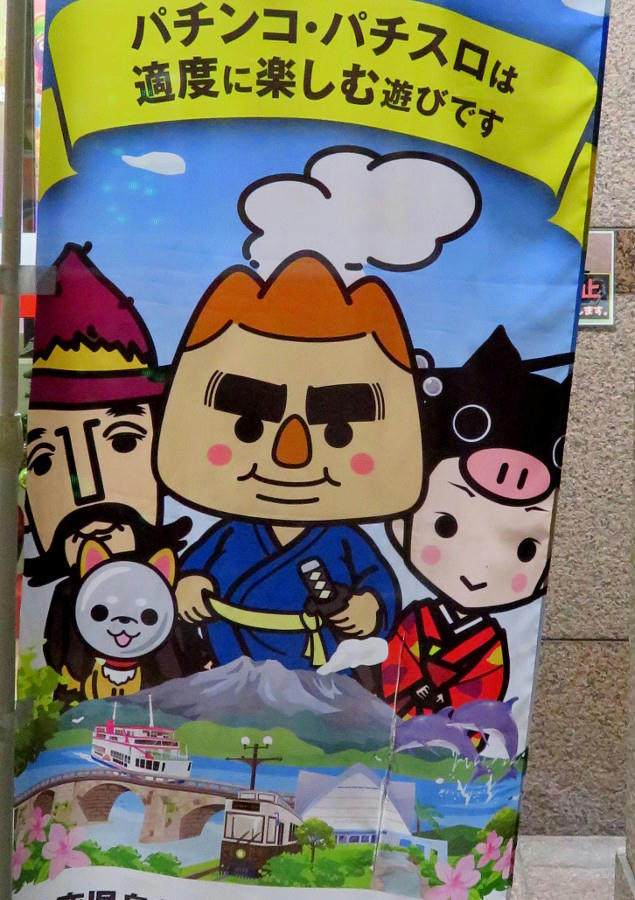
(Advertising for a pachinko parlor. Toshimichi has been turned into a sweet potato used for making shochu, the dog is a pachinko ball, Saigo is the Sakurajima volcano, and Atsuhime represents Kagoshima's main farming product - black-skinned pigs.)
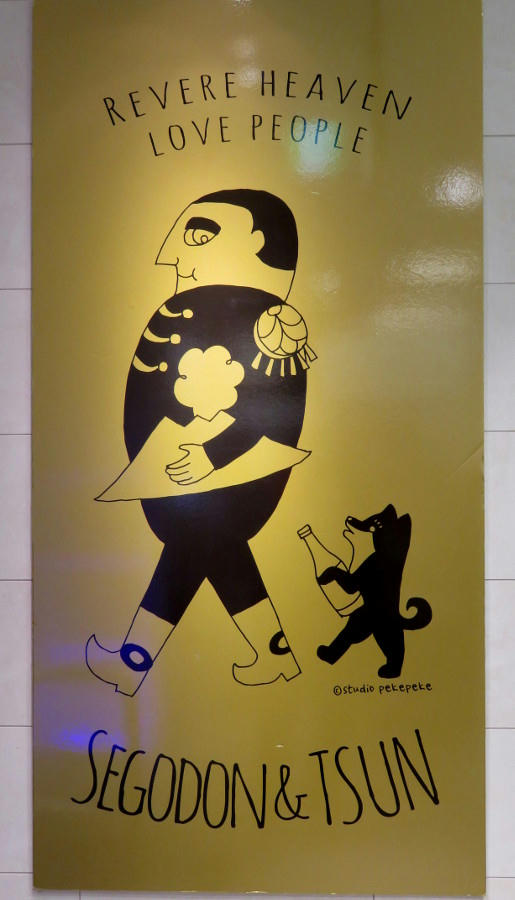
(Stylized ad for the Tokyu Hands department store. I assume the dog's name is "Tsun." I haven't seen an official name for it anywhere. The slogan "Revere heaven, love people," refers to giving respect to the Emperor (heaven), while treating your fellow Japanese properly. Saigo is holding the volcano as if it's an Admiral's hat.)
150th Anniversary Celebrations
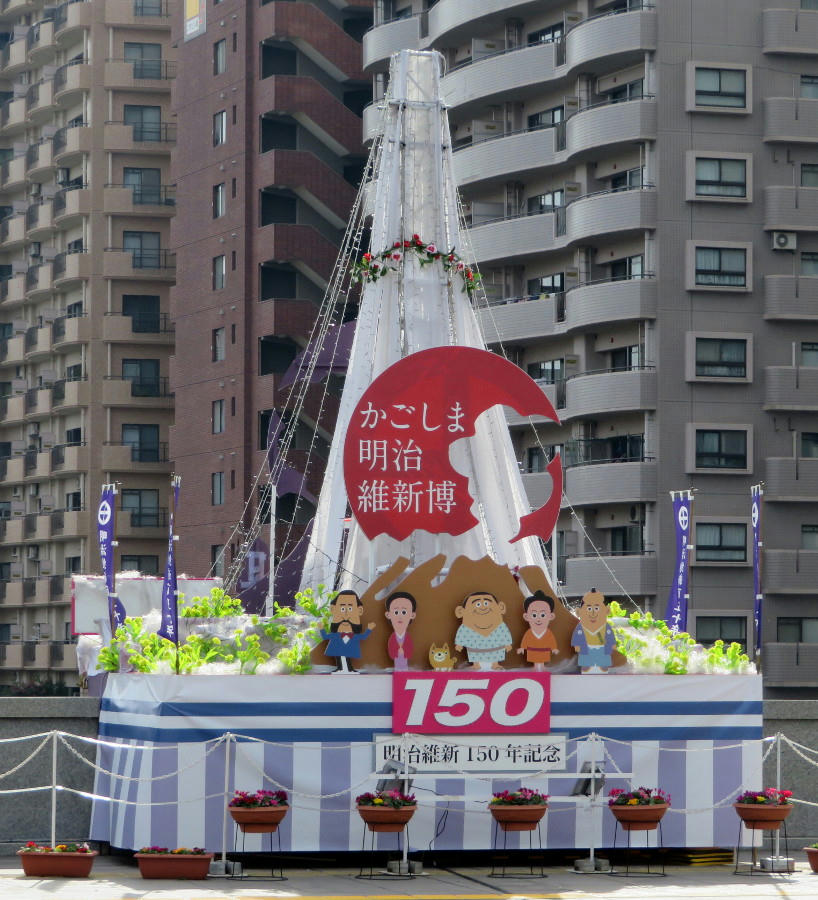
Now, having run the above photos, the reason I'm doing this blog entry NOW is that Kagoshima is preparing for the upcoming 150th anniversary of the Meiji Restoration. The Meiji Emperor ascended the throne on Feb. 3rd, 1868. The city erected the pseudo Christmas tree last December, and they've been tweaking the decorations on it ever since.
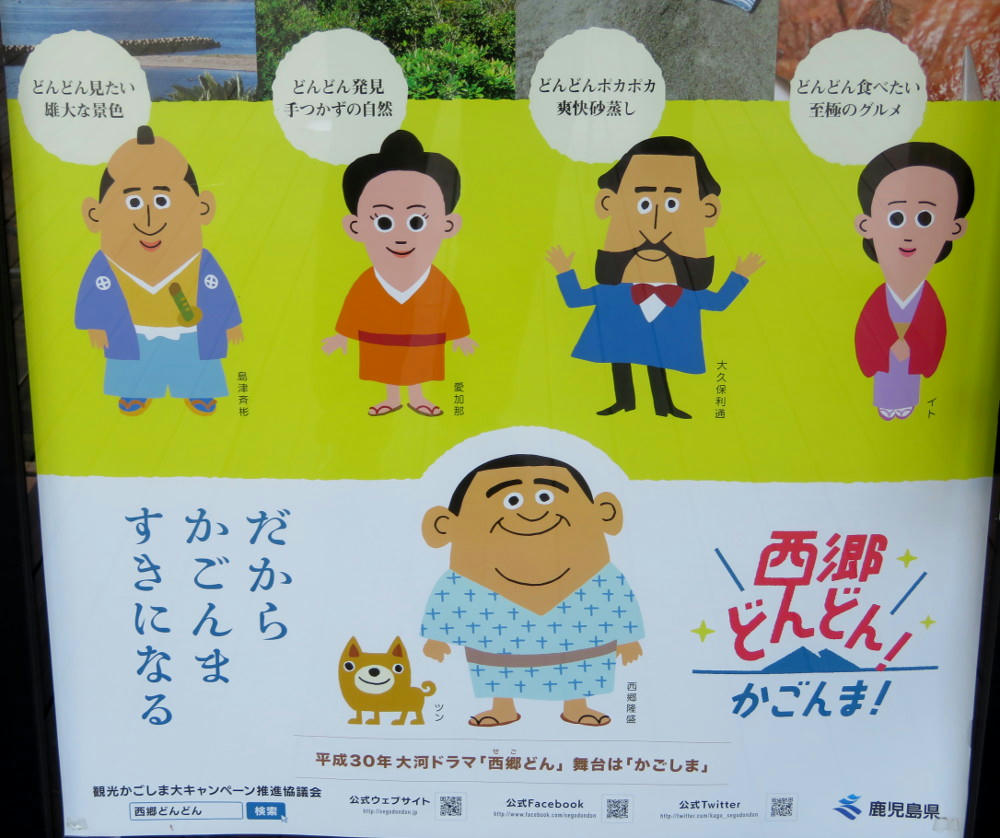
The character designs here were actually made for the new NHK TV drama that's supposed to start running this month - Sego-don. ("Sego" is the local dialect pronunciation of "Saigo.") This ad promotes Kagoshima goods and travel. It includes Nariakira Shimadzu (lord of Satsuma that was instrumental in giving Saigo power), Atsuhime (a woman who had been adopted by the Shimadzu clan before marrying the shogun at the time) Saigo, Toshimichi and (not sure).
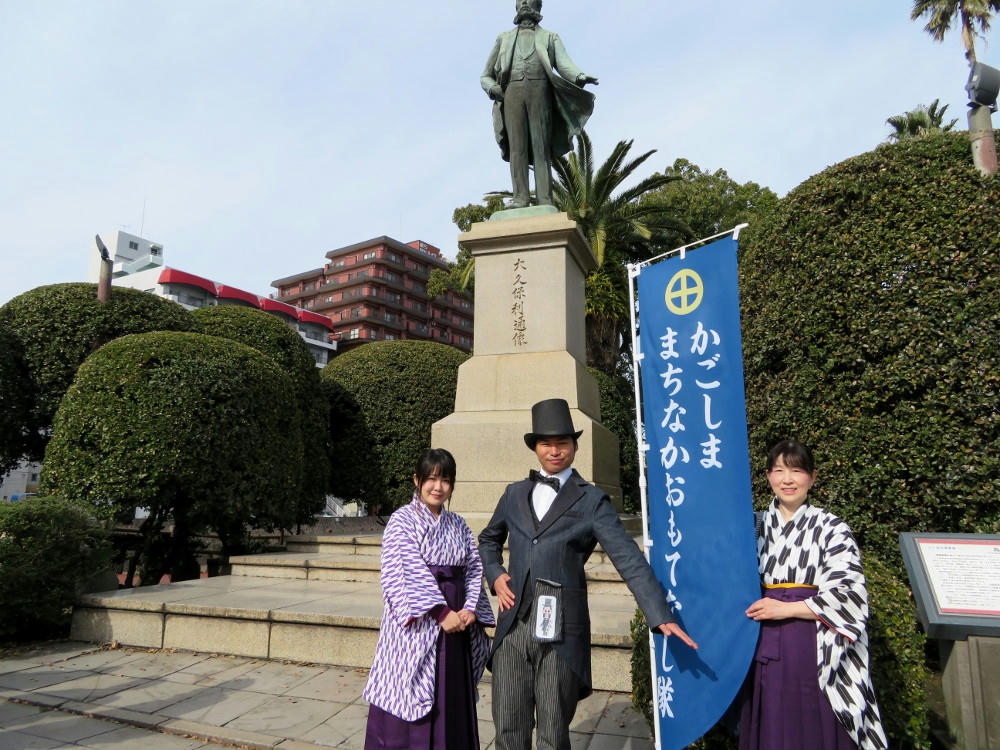
On Sunday, Jan. 14th, as I was walking up to Amu Plaza from Tenmonkan, I saw these actors standing in front of Toshimichi's statue. I asked to take their photo and they agreed, but then insisted on including me in the shot. Sigh.
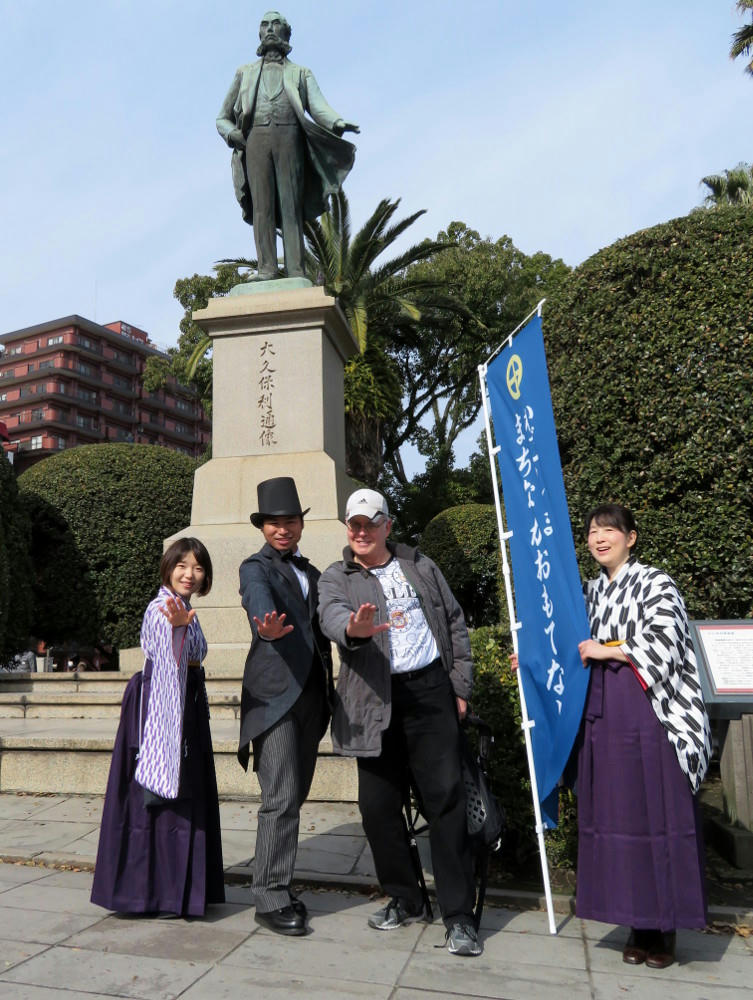
They told me they were there to promote the new Sego-don TV series, in conjunction with the Meiji anniversary. The guy in the top hat is supposed to be Toshimichi. When we posed for the shot, one of the women said I had to put my hand out and say "Sego-don", with emphasis on the "don" to make it sound like an explosion.
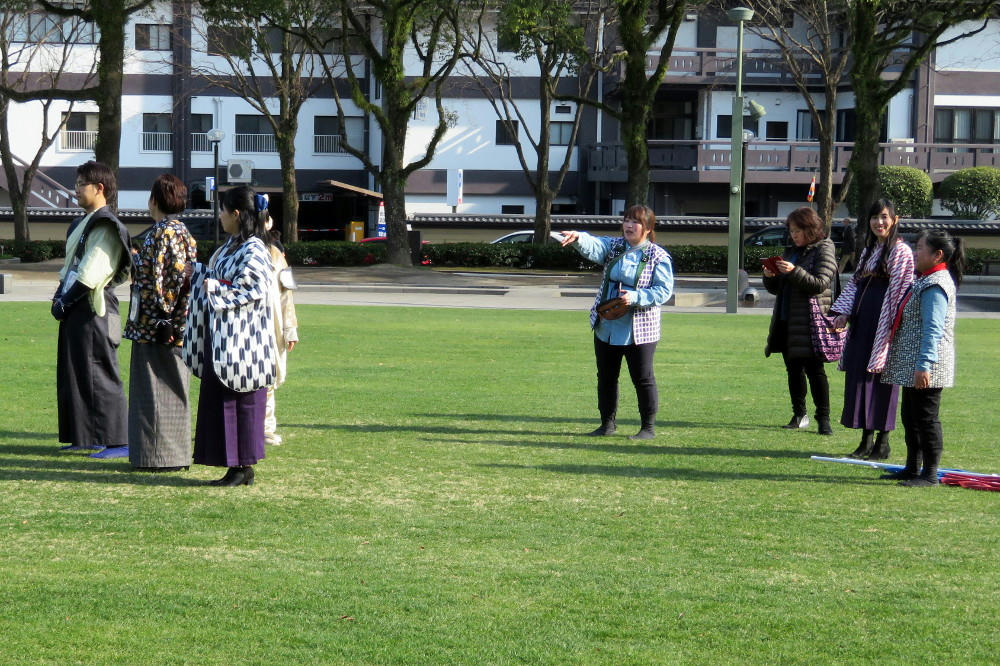
I went to Amu Plaza, saw the Osumi Peninsula goods fair and everything that I wrote about yesterday. And after a while I started thinking about the fact that the actors were in front of Toshimichi's statue. The statue of Saigo (top of the blog entry) is close to Tenmonkan, a few blocks west, at the end of Central Park. It's a big tourist draw and easy to get to. I wondered what the odds were that another group of actors were down there, too. After about 2 PM, I left Amu Plaza and walked to Central Park, arriving at maybe 2:30. There was nothing near the statue, but a few actors in Meiji era clothes were posing with themselves for photos, with one stocky woman wearing a Saigo paper cut-out mask, and another in a dog costume.
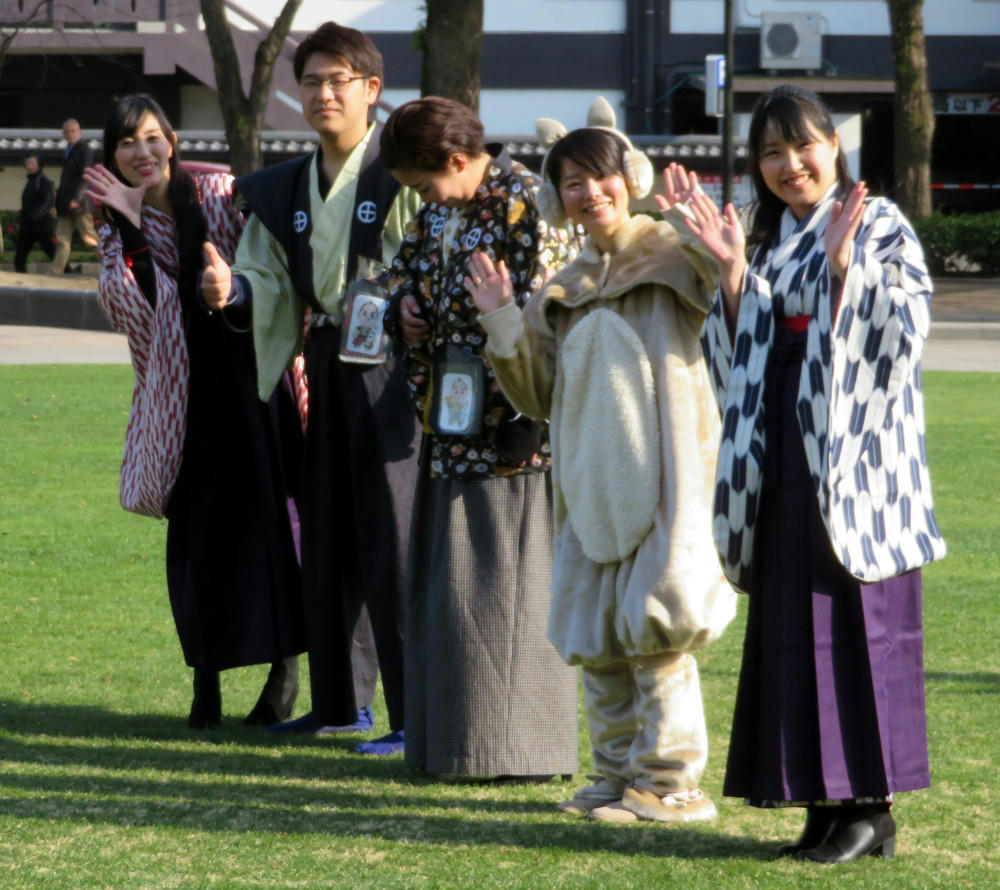
I tried taking their picture surreptitiously from a distance, but one of them saw me, and then all of them started waving. I took a couple shots, bowed, and left before they tried to get me to pose with them
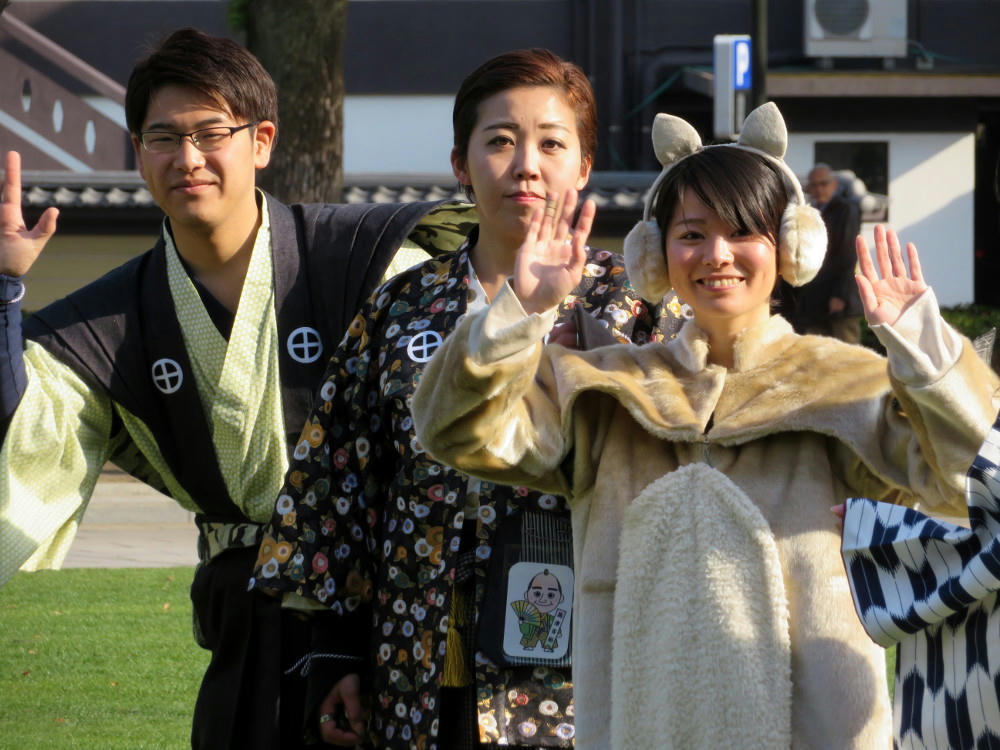
Museum
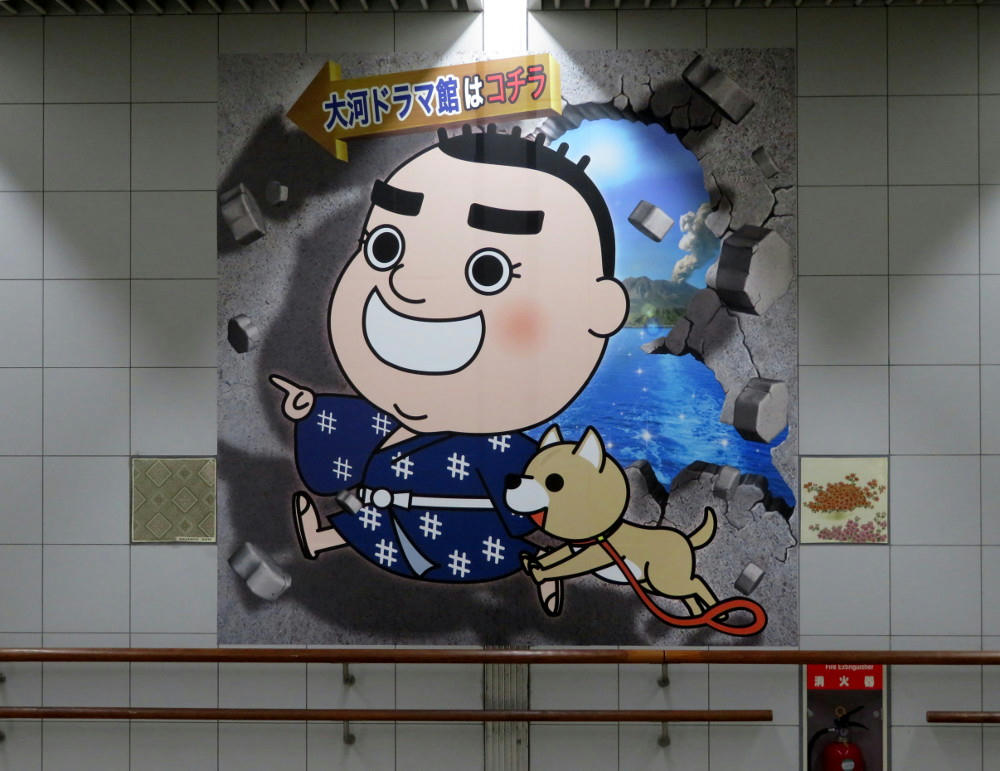
Ok, last thing. A few years ago, the big city hospital a half mile southeast of the main train station was torn down, and everything was moved to a new location a little closer to the station, but more south. A few months ago, construction on a new museum dedicated to Saigo was started at the old hospital site. It finally opened this week. To get visitors to the museum, they put up trick art posters in the underground walkway that leads from the station and runs under the streets to the department store and hotel at the other side.
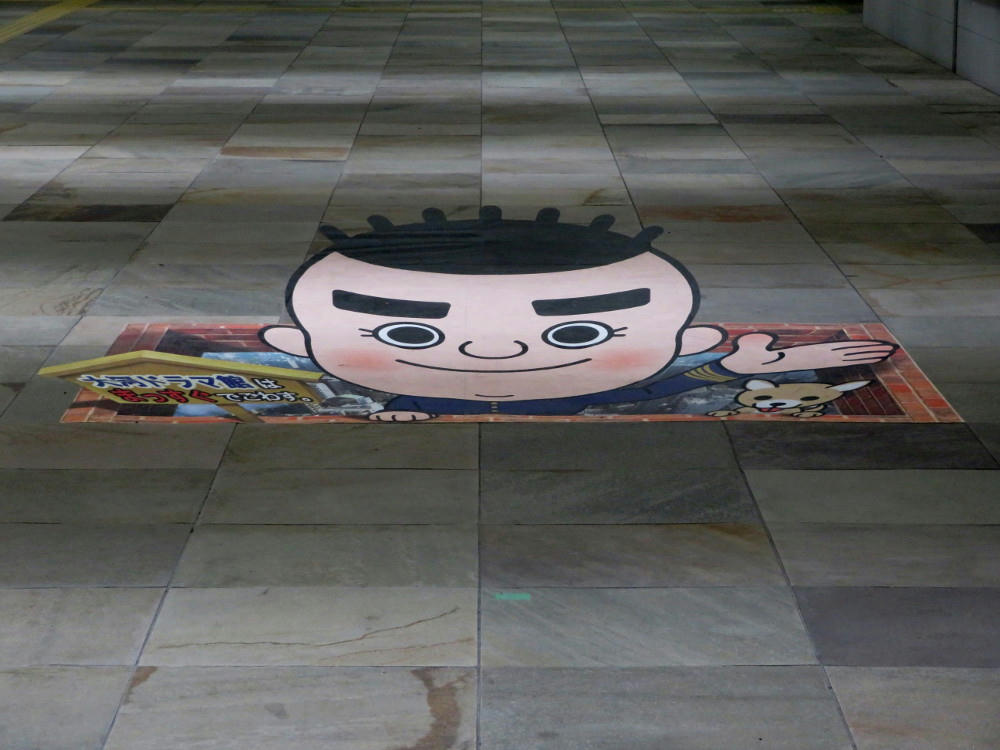
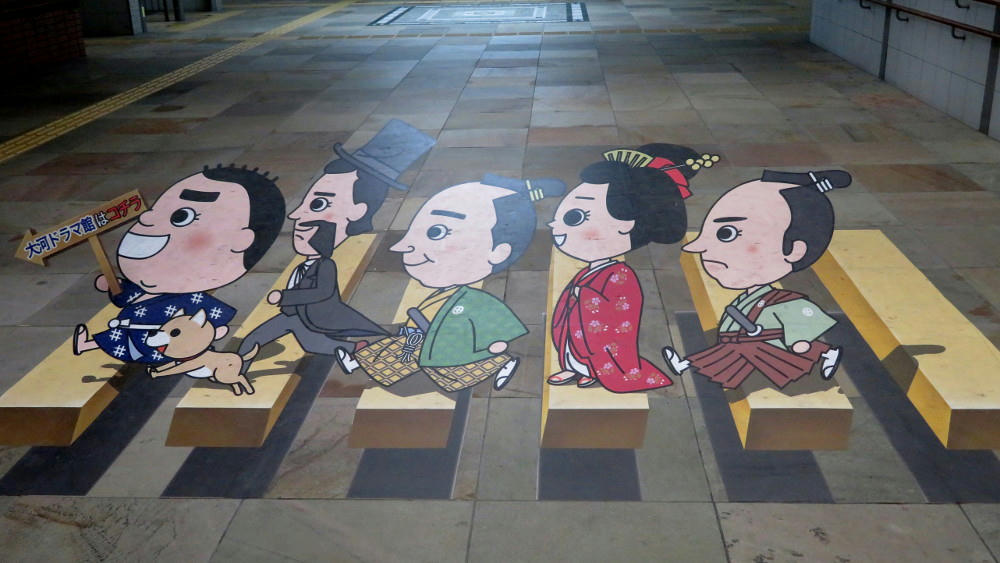
I've seen the floor plan for the museum. It looks like it's just one story tall, and maybe 5 rooms total. I may go some day, but I'm not sure it'll be worth the ticket price.
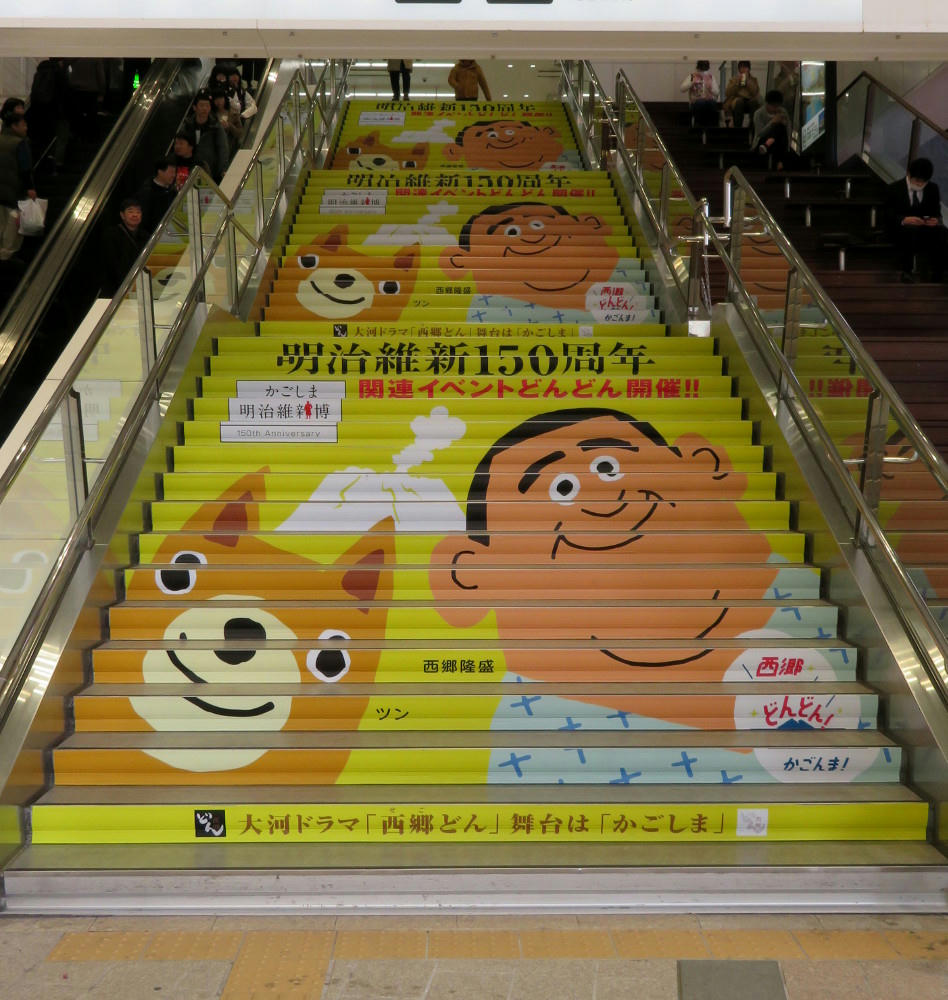
Stairs leading to the train terminal. The advertising is for the 150th anniversary since the start of the Meiji era.




No comments:
Post a Comment